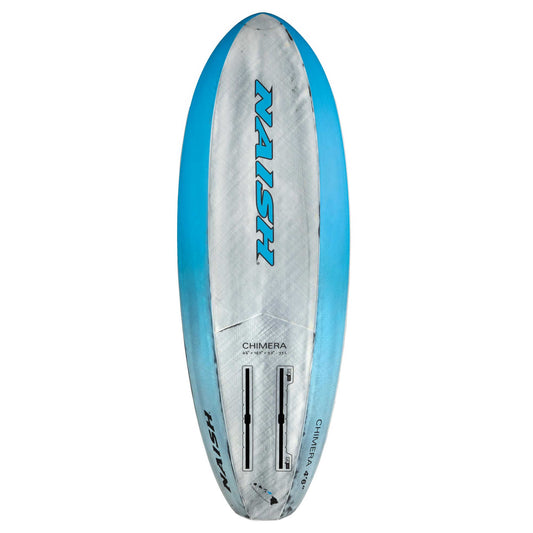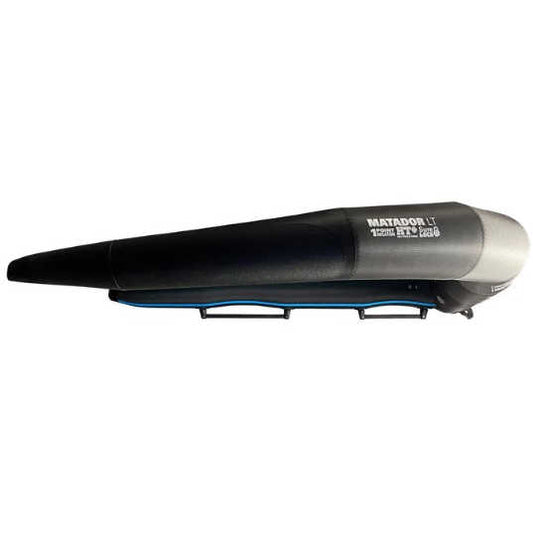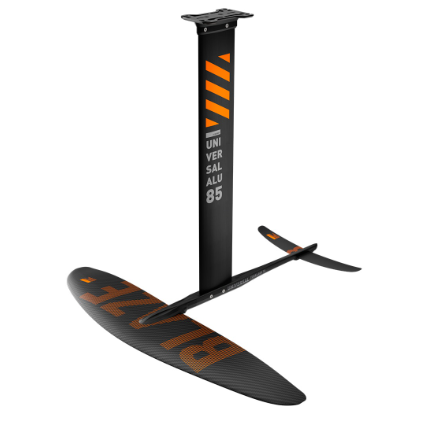Wing Foiling FAQs (Beginner and more)
Chris ShawShare
Wing Foiling Beginner FAQs
Questions we always get asked, so we might as well answer them for you all!
-
Do I need lessons to wing foil?
It can depend on your experience foiling, but generally we would advise everyone to have a lesson when trying to get up onto the foil. Using the wing can be easy to teach yourself, but when foiling, there are certain tips and tricks and a lesson, even if it is one, makes it easier.
-
Does my height impact wing size choice?
To an extent it does, due to the ability to handle the power with your height, but it is not determined by that. As with any wind sport, the wing size is determined by the wind speed you will be going out in and what the wing can handle. When learning to wing, you will go out in winds suitable for beginners, which can range from 15-24knots. As such, you will use a 4.0-5.5 wing, with a 4.0 more suitable for a lighter or shorter rider, and a 5.0-5.5 for a taller, heavier rider.
As you progress, you will want to either go out in stronger winds, in which case you will use more of a 3.0-4.5, depending on the wind strength. As you are confident wing foiling, you may enjoy going out in really light winds, 15knots or less, and as such would require a larger wing such as 5.5-7.0. (the largest 7.0+ recommended for taller riders as wing tips can touch the water a lot more).
A small breakdown of wing sizes in comparison to wind strengths(slightly variable between wing brands) –
|
Wing size |
Foil |
|
|
2.8m |
30knts |
-high wind or down winders |
|
3.6m |
18-30knts |
-good for heaver rider in high wind |
|
4.6m |
18knts |
-go-to learner wing |
|
5.3m |
15+knts |
-progressive beginner |
|
6.0m |
12-25knts |
- good second wing for earlier foiling |
|
7.2m |
8-10knts |
-for experts in light winds |
-
How big should my board be?
Wing foil boards are very compact in volume so although they seem small, they are packed full of volume so even the largest sizes aren’t that much longer than 6’0”. Generally, we gauge a board for someone as their weight in kg + 30/40kg = Board volume in L.
The 30/40 can vary slightly with someone’s previous experience in other water sports of if they have had lessons in wing foiling and looking for a more progressive first board. As you progress, you will want to size down at least 20-30L smaller each time so that it is less floaty and more ‘sinkable’.
-
Are all the valves universal?
Unfortunately, the answer is no. Most brands do not correspond with each other (difficult we know!) and as such, we generally sell a pump that matches your wing or one with many adaptors, such as the Mystic pump. Some brands like Naish have kept it simple and use the same valve as paddleboards, whereas some are keeping the valve more similar to kite.
If you want to check, give us a call on 01202 700503 about your wing or one you are looking at.
-
Can I use my sup pump?
For some branded wings you can. The Naish, Neilpryde use sup pump valve (Halkneys), but from what we sell of brands none others do.
-
Do I need to rinse the wing every time?
As with anything, things last when you take care of them. Wings are not cheap and easy to replace, so best to look after your wing. Your wing will be kept in the nicest condition if you do rinse it off after each use, and leave it to dry before putting it back in the bag.
However, if you are in freshwater then you don’t necessarily need to if it isn’t too dirty from other bits. If you are using in the sea, salt can be your worst enemy to your kit, so rinsing it off is always good idea. Nevertheless, if you have had a good session, and likely to be using it within the next few days, it may be better use of your time to leave it and wash after your next session. Definitely rinse off your wing kit if you think you are not going to use it for a while after your session and going to be packed away in their bags for a while.
-
I don’t think the gauge on my pump is working?
This can be a common mistake by those with their first pieces of kit. The gauge on the pump won’t move when you first start pumping air in as it requires a certain amount of pressure until it starts to measure any pressure. If after a couple of minutes of pumping the wing, and the strut looks inflated, yet the gauge still hasn’t registered anything, then your likely have an issue and can let us know.
-
Do I need to take my foil apart?
-
What wind shall I learn in?
You want enough wind so you have enough to power you up onto the foil without too much effort, but too much gusty wind can make it too fast and limit you getting up at all. We generally suggest similar winds to when you learn to windsurf, so 15-20 knots is ideal. If you are slightly larger rider or more experienced, you may benefit from a bit more wind from 16-23 knots.
-
Do I need to dry all my kit off?
Drying your kit off does mean it will last longer and stay in a better condition. However, sometimes it can take a while for the kit to dry (especially in our cold, damp winters) and it may not be practical to leave it out to dry. We recommend drying your kit as much as you can before you pop it away. If you are going to be going out on the water in quick succession to coming off the water, then a few days to a week wont do much harm.
However, if you leave a damp board in its bag, zipped up, then there is a risk that the board can get damaged from remaining in damp conditions and osmosis through the board paint can occur. The same can happen with the wing. As such, we do recommend drying your kit out or off with a towel before packing away. We know this isn’t going to happen when you have just come off the water, so we recommend packing it all away then rinsing and drying when you are at home.
-
What leash is best – ankle or waist?
It is a personal preference, however we are finding that the waist leash for your board is definitely now the more popular option. Most people start out with the ankle leash as it is simple and what we are all used to with paddleboarding, yet as many progress they do find it gets in the way. The waist leash is less under your feet and there is no risk of standing on it or getting the leash caught around either foot, in between the toes or even the foil sometimes.
The waist leash keeps it out of sight out of mind, and lets you concentrate on foiling.
-
Do I need two wing sizes?
When starting to foil, you will only need one as you will concentrate on going out in a particular wind strength that your wing (most likely sized between 4.0-5.5) can handle.
However, as you become an avid foiler, you will likely want something either a bit bigger for lighter winds, or smaller for stronger winds and jumps/tricks. Compared to windsurfing, the gap between wing sizes can be a bit larger (more than 1.0m2). Good pairings of 2 sizes are; 3.5 and 5.0, 4.0 and 6.0, 4.5 and 6.0, 5.0 and 6.5, 5.5 and 4.0… or even 3.5, 4.5 and 5.5! Give us a call if you want more information on sizing for you and your kit.
-
Should I wear a helmet and vest?
We do recommend everyone when foiling, even if competent, to wear a helmet and impact vest. You can be going out in stronger winds and have bigger impacts into the water, and of course the foil is super sharp and can head in any direction sometimes. Even walking out with the foil turned over on the water sometimes in the wind can lead to it hitting your head so always best to be safe than sorry!
We generally stock good range of the Forward WIP range of helmets and vests.
Check out these two blogs for more information –
Which helmet should I wear foiling?
What impact vest should I wear?
-
Do I need a harness?
Unlike with windsurfing or kitesurfing, most wing foilers don’t need to use a harness. The harness is generally used for those who are out winging in long stints, downwind, or racing. The strain on your arms isn’t as bad so is definitely a more progressive accessory when wing foiling and not needed recreationally when out.
-
Do I need footstraps as a beginner?
No. Footstraps are only needed as an intermediate foiler. When learning, your feet want to be where the footstraps are screwed on and as such it is easier with no straps. It will feel more comfortable to have no straps for a while until comfortable up and foiling and turning.
-
Do I need windows in my wing?
Windows in a wing and more common on wings designed for freeride and around beginners to intermediate riders. The window acts as a safety element so you can see who is around you when up foiling. No windows in a wing are generally seen on more advanced wings that people may use on waves,etc and they won’t be cruising around looking to see if anyone is on their path. Windows are seen on most wings for safety and visibility, otherwise you can be sailing blind.
If you have any more questions, or opinions on our answers... please give us a call on 01202 700503 or email info@pooleharbour.co.uk
We are happy to help with any enquiries or advice you need!!










